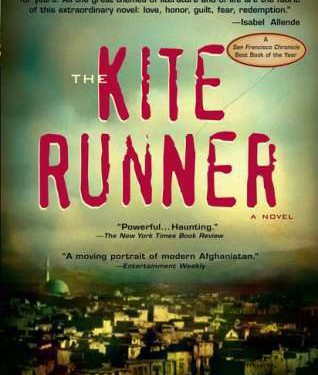Discuss the narrative stylistics of Khaled Hosseini with references to the opening chapter and other quotes of significance.
Throughout the novel of The Kite Runner we see a reflective tone take place that looks back on the narrator’s life, this is initially stated within the first paragraph as a cyclical structure is shown; the first sentence “I became what I am today” partnered with the last line of the chapter, “And made me what I am today” portray this technique that is consistent in the rest of the book. Instantly we as the reader see that the genre will be a ‘self-discovery’ story as all seems to focus back onto the opening paragraph which appears as a distinct point in the narrator’s life, evidence for this can be seen with the use of the adverbial time phrases ‘That was a long time ago’ and ‘looking back now’. There is an element of regret and guilt around this scene though as it completely contrasts from the following paragraph that appears to have more of a pleasant description. Whereas, the distant memory appears rather bleak and brutal as his childhood is personified: “the past claws its way out”, suggesting the narrator’s fear not only exists in that moment but also upon reflexion many years later. The divide in descriptions of the analepsis in the first paragraph and his new life in San Francisco in the second, show how he attempts to isolate himself from his past and the person he used to be. However, the two settings discussed show a development in his character as we see he is enlightened later within the novel and returns to correct his mistake. Likewise, the motif “there is a way to be good again” suggests a moral message, confirming the theory that the book will take a confessional tone.
Initially the narrator remains anonymous forbidding himself of an identity, thus suggesting shame. But we go on further to see that also the character appears rather self-centred, as he paints his own image as the helpless victim, we see this through his frequent use of the first person pronoun. This reflects why he is the narrator, as he simply sits by and watches the events that shape his life but does not act on changing them and making his own choices, for instance when his best friend was being raped. Furthermore, the first chapter tells us that the narrating voice is a judgmental one, this is portrayed in his introduction of his best friend ‘Hassan the harelipped kite runner’, as he highlights to the reader immediately Hassan’s flaws showing he is a shallow character. Yet, this description tells us of Hassan’s significance as he in fact is the main character, for he is ‘The Kite Runner’ the book is named after.

